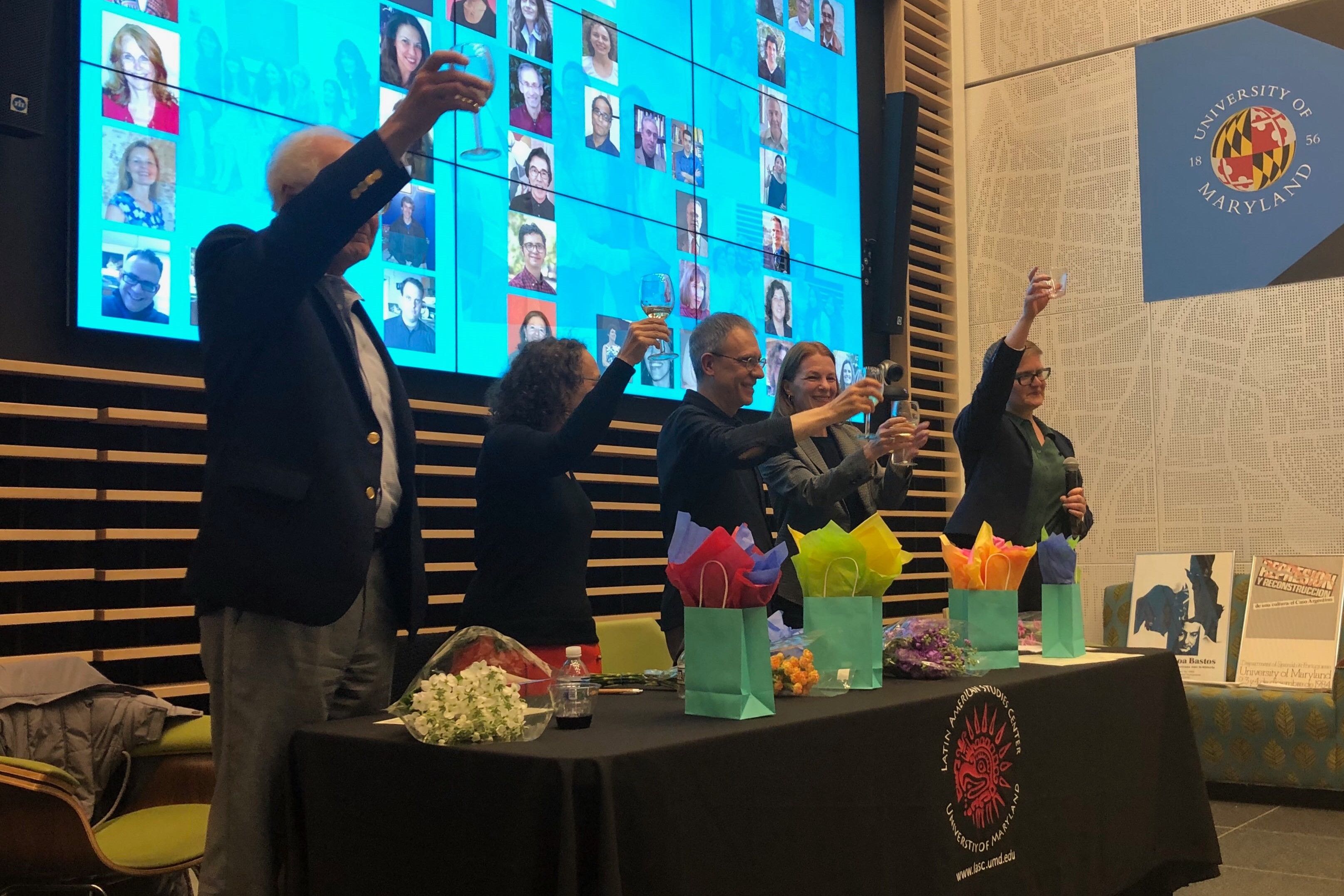By Shreeya Agarwal
For The Diamondback
For much of its three-decade existence, the Latin American Studies Center was located in three small, disconnected offices in Taliaferro Hall, serving a handful of researchers and scholars from countries such as Chile and Argentina.
“There wasn’t a centralized space that was inviting where people could come and spend time and connect with each other,” said Britta Anderson, the center’s interim director.
But in the spring of 2017, thanks to the efforts of former director Laurie Frederik — a performance studies professor at this university — the center moved to H.J. Patterson Hall, allowing it to expand rapidly.
The center now boasts 42 undergraduate students in its certificate program, according to Anderson, who said enrollment has risen significantly since she assumed the position in 2017.
“We are able to share this great atrium space with other global programs in the university,” Frederik said Tuesday night, as the center celebrated its 30th anniversary. Frederik was one of four previous directors who reflected on the growth the center has made over the years.
“LASC continues to create and expand language, area studies and study abroad programs for undergraduate students and graduate students to strengthen research collaboration within the university and across other institutions throughout Maryland,” said Karin Rosemblatt, who served as director from 2008 to 2013.
The center was founded in 1989 by Saúl Sosnowski, a professor of Latin American literature and culture at this university, who originally intended it to be a research and academic program with the goal of building relationships with South American scholars and researchers.
Blanca Arriola Palma, a senior government and politics major, said the center has become a significant part of her college experience and has helped her build relationships with other students.
“It’s really nice to find a space where you can learn about your own culture and have a sense of pride and identity with being Latin American,” said Palma, noting an event the center put on in October for “Dia de los Muertos,” which honored the dead and highlighted the different ways the holiday is celebrated.
“I’ve discovered that I really love learning about Latin America,” Palma, the president of the university’s Political Latinxs United for Movement and Action in Society organization, said.
[Read more: UMD Latinx Monologues weave together art and activism]
Senior public policy major Jennifer Reyes, who has been a member of the center’s certificate program since she was a freshman, called it the “core place” she would go during her time on campus.
“I would have my lunch and work on my homework here, so they’ve always just been a great support for me as a Latin American student,” Reyes said.
Now that the center has its own home, it must continue to expand its relationship with the Latinx community around the Washington, D.C., metropolitan area because “they create professional, business and foreign ties to the region,” Rosemblatt said.
Another former director — Alejandro Cañeque, who served from 2013 to 2014 — said the center, in its current form, is incomplete, despite a fostering of learning and teaching.
More emphasis needed to be placed on research, Cañeque said.
“I believe that one of the functions of a center such as this one is to foster the knowledge and connections with the Latin American people,” he said. “There is a very powerful way to obtain that knowledge, and that is through research directly.”
Palma said she hoped the center “stays here forever,” and becomes an greater part of the university community.
“I can’t imagine what my college experience would have been like without the center,” she said. “This is the place that I call my home away from home.”



